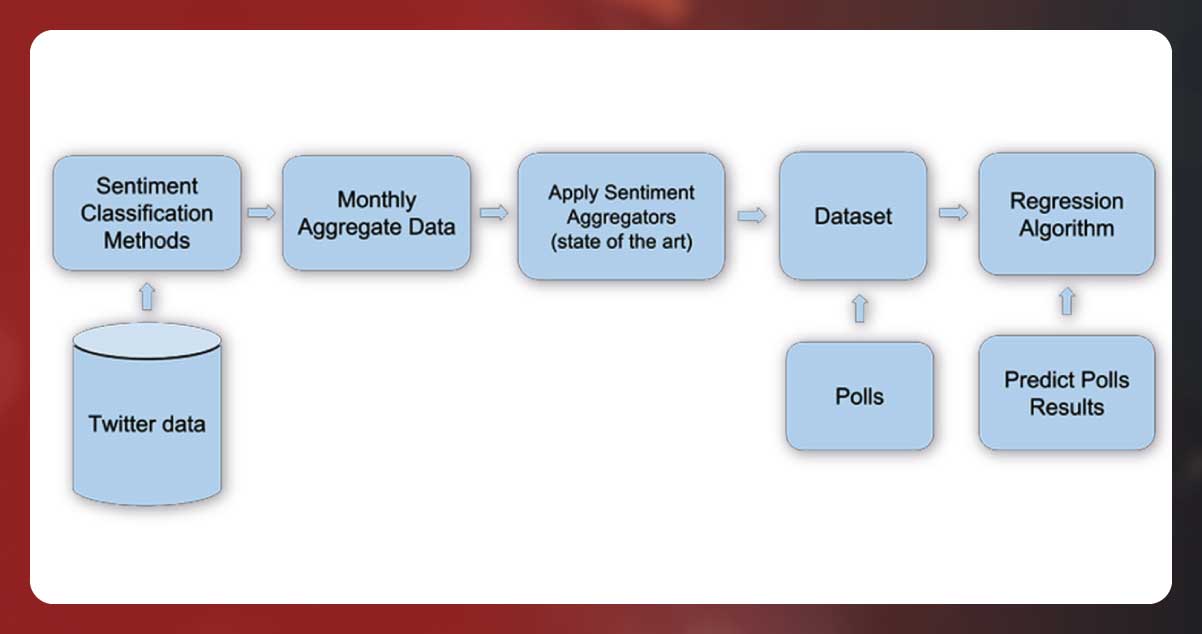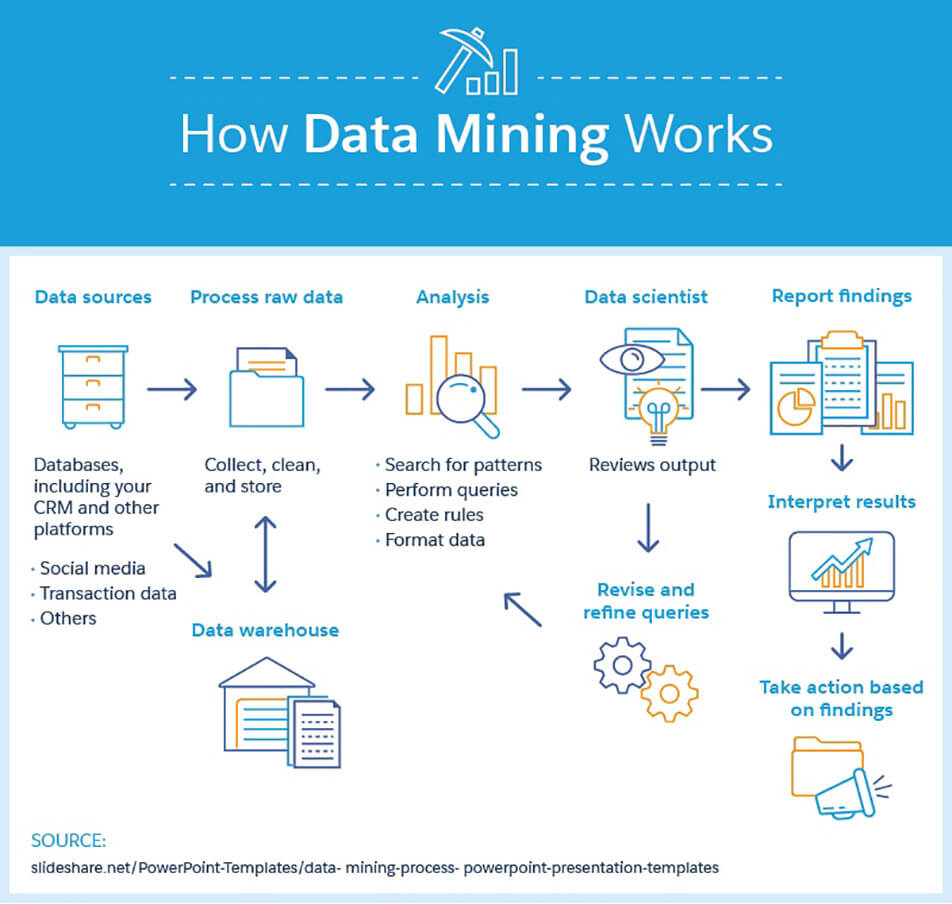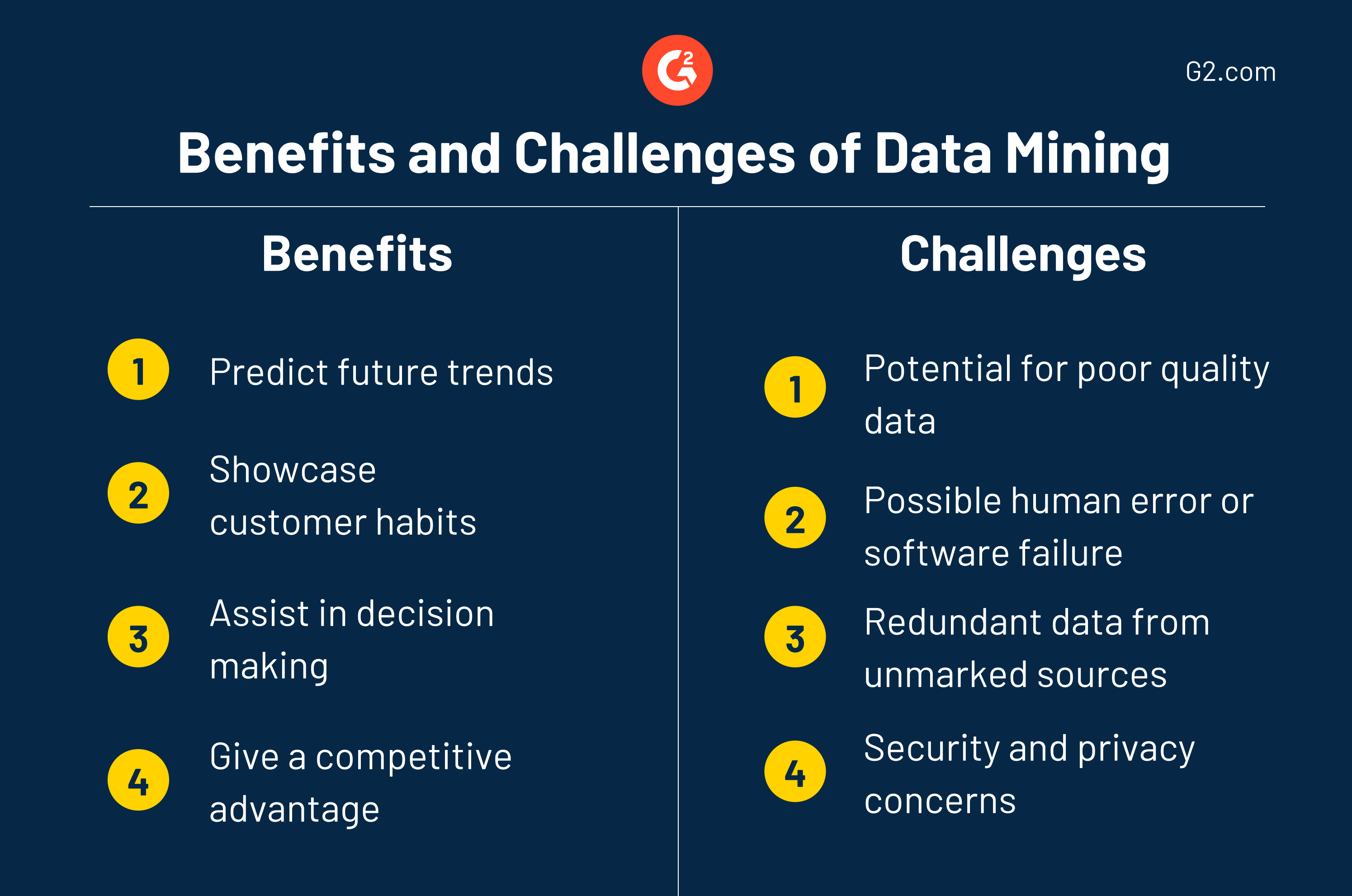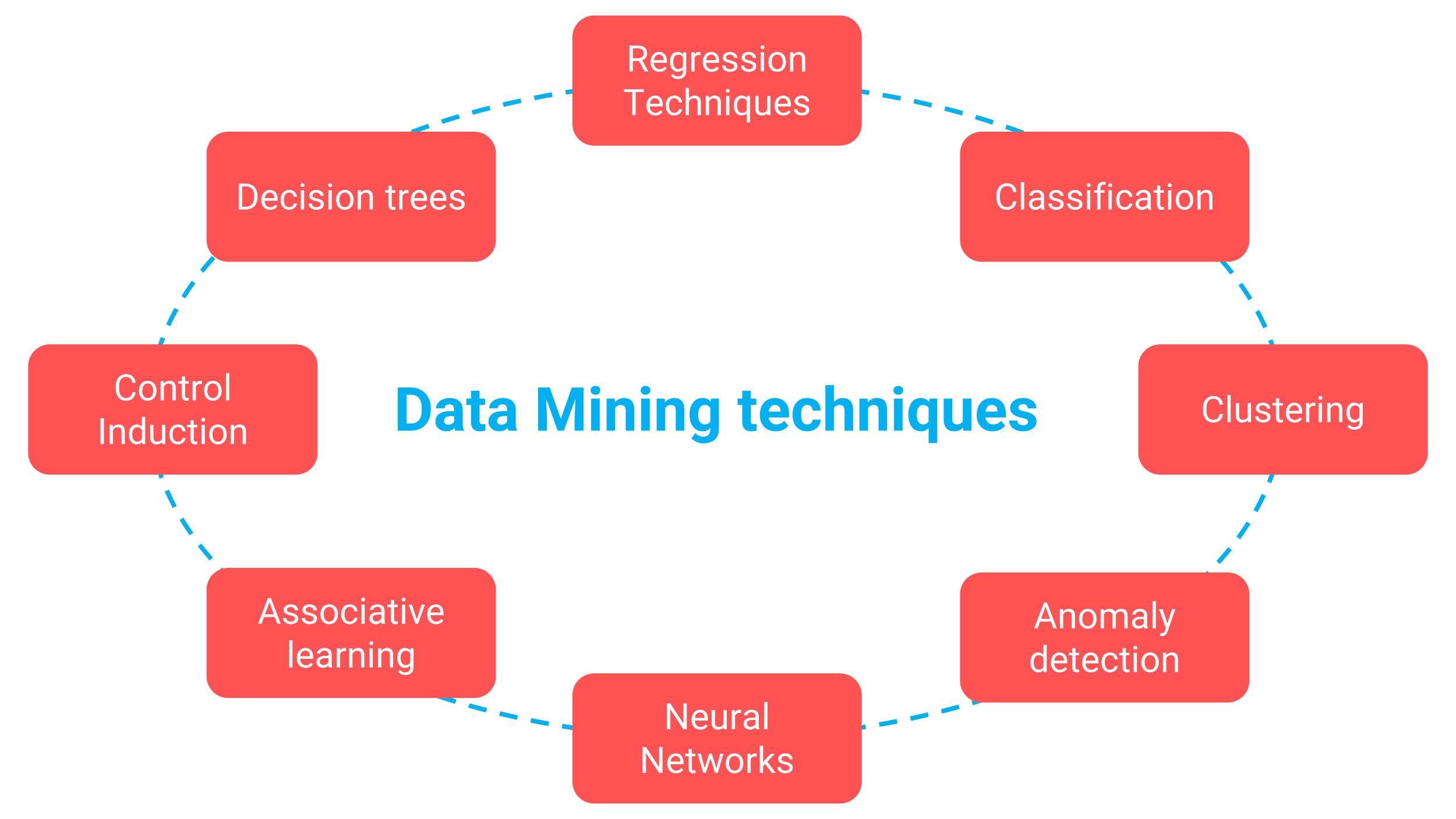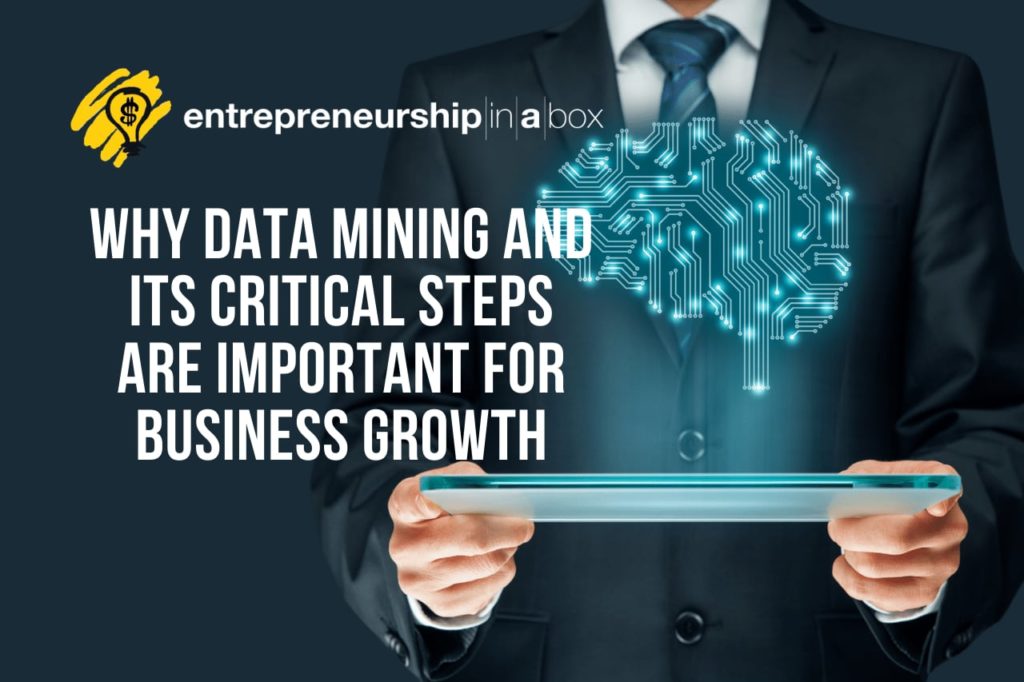A Firm Would Use Data Mining If It Wanted To

Imagine a bustling marketplace, not of fruits and spices, but of information. Every transaction, every customer interaction, every fleeting trend leaves a digital footprint, a tiny data point swirling in a vast ocean. Now, picture a skilled navigator, charting a course through those turbulent waters, uncovering hidden currents and revealing profitable shores. That, in essence, is the power of data mining, a tool increasingly vital for businesses seeking to thrive in today's data-driven world.
This article explores the strategic landscape where a firm, possessing the resources and ambition, could leverage data mining to gain a competitive edge. We'll delve into the 'what,' 'why,' and 'how' of this transformative process, illustrating its potential to unlock invaluable insights and drive significant business outcomes.
Unveiling the Potential: Data Mining Explained
At its core, data mining is the process of discovering patterns, trends, and valuable information from large datasets. It employs a variety of techniques, including statistical analysis, machine learning, and database management, to sift through the noise and extract meaningful knowledge.
Think of it as detective work for businesses, uncovering clues hidden within their own data to solve puzzles and make better decisions. From predicting customer behavior to optimizing marketing campaigns, the applications of data mining are vast and varied.
Why Would a Firm Embrace Data Mining?
The reasons are compelling. In an increasingly competitive marketplace, businesses are constantly searching for ways to differentiate themselves and gain an advantage. Data mining offers a powerful means of achieving this by providing a deeper understanding of customers, markets, and internal operations.
Consider a retail firm struggling to personalize its marketing efforts. By analyzing customer purchase history, demographics, and browsing behavior, data mining could reveal distinct customer segments with unique needs and preferences. This information can then be used to create targeted campaigns that resonate with each segment, increasing conversion rates and boosting sales.
Furthermore, data mining can help firms identify emerging trends and anticipate future demand. By analyzing historical sales data, social media sentiment, and economic indicators, businesses can gain valuable insights into market dynamics and proactively adjust their strategies. This allows them to stay ahead of the curve, capitalize on new opportunities, and mitigate potential risks.
Beyond customer-centric applications, data mining can also be used to optimize internal processes and improve operational efficiency. For example, a manufacturing firm could use data mining to identify bottlenecks in its production line, predict equipment failures, and optimize inventory management. These improvements can lead to significant cost savings and increased productivity.
The Data Mining Process: A Step-by-Step Guide
Implementing data mining is not a one-size-fits-all process. It requires a structured approach, tailored to the specific needs and objectives of the firm. Generally, the process involves several key steps.
First, defining the business objectives is crucial. What specific questions does the firm want to answer? What problems does it want to solve? These objectives will guide the entire data mining process. Clearly defined goals ensure the project stays focused and delivers meaningful results.
Second, data collection and preparation are essential. This involves gathering relevant data from various sources, cleaning and transforming it into a usable format. Data quality is paramount. Incomplete or inaccurate data can lead to misleading insights and flawed decisions. According to a report by IBM, poor data quality costs U.S. businesses an estimated $3.1 trillion annually.
Third, choosing the appropriate data mining techniques is critical. Different techniques are suited for different types of data and different objectives. For example, clustering algorithms can be used to identify customer segments, while regression analysis can be used to predict future sales. The selection of the right technique requires expertise and a deep understanding of the underlying data.
Fourth, the actual data mining process involves applying the chosen techniques to the prepared data. This may involve using specialized software tools and algorithms to uncover patterns and relationships. The results are then carefully analyzed and interpreted.
Fifth, and finally, the insights gained from data mining must be translated into actionable strategies and communicated effectively to stakeholders. This may involve creating visualizations, reports, or presentations that summarize the key findings and recommendations. The ultimate goal is to use the insights to drive meaningful business improvements.
Challenges and Considerations
While data mining offers tremendous potential, it's important to acknowledge the challenges and considerations involved. One significant challenge is data privacy. Businesses must ensure they are collecting and using data responsibly and ethically, complying with relevant regulations such as the General Data Protection Regulation (GDPR).
Another challenge is the need for specialized expertise. Data mining requires a combination of technical skills, business acumen, and domain knowledge. Firms may need to invest in training or hire data scientists to effectively leverage data mining.
Furthermore, it's important to avoid "data dredging," the practice of searching for patterns in data without a clear hypothesis or objective. This can lead to spurious correlations and misleading conclusions. A well-defined research question is essential for ensuring the validity and reliability of data mining results.
Examples of Success
Numerous firms have successfully leveraged data mining to achieve significant business outcomes. Netflix, for example, uses data mining to personalize movie recommendations, improving customer satisfaction and retention. Their recommendation engine, powered by sophisticated algorithms, analyzes viewing history, ratings, and other data points to suggest titles that users are likely to enjoy.
Amazon uses data mining to optimize its supply chain, predict demand, and personalize product recommendations. Their ability to anticipate customer needs and deliver products quickly and efficiently is a key competitive advantage.
These examples demonstrate the transformative power of data mining when applied strategically and effectively. By leveraging data to gain a deeper understanding of their customers, markets, and operations, these firms have been able to drive significant growth and profitability.
The Future of Data Mining
The field of data mining is constantly evolving, driven by advancements in technology and the increasing availability of data. The rise of big data, cloud computing, and artificial intelligence is creating new opportunities for businesses to leverage data mining.
As data volumes continue to grow, the ability to extract meaningful insights will become even more critical for success. Firms that embrace data mining and invest in the necessary skills and infrastructure will be well-positioned to thrive in the data-driven economy.
The future of data mining will likely involve more automation, more sophisticated algorithms, and more real-time insights. Businesses will be able to use data mining to make faster, more informed decisions, and to adapt more quickly to changing market conditions.
As quoted by Hal Varian, Chief Economist at Google, "I keep saying the sexy job in the next 10 years will be statisticians, and I'm not kidding." This quote underscores the growing importance of data analysis and the increasing demand for professionals who can extract valuable insights from data.
In conclusion, if a firm with the resources and foresight were to explore data mining, it would be embarking on a journey of discovery, unlocking the hidden potential within its own data. This journey requires careful planning, strategic execution, and a commitment to ethical and responsible data practices. However, the rewards – a deeper understanding of customers, optimized operations, and a sustainable competitive advantage – are well worth the investment.


:max_bytes(150000):strip_icc()/data-mining-49e2707e28c647ae95ada2852bfff11d.jpg)
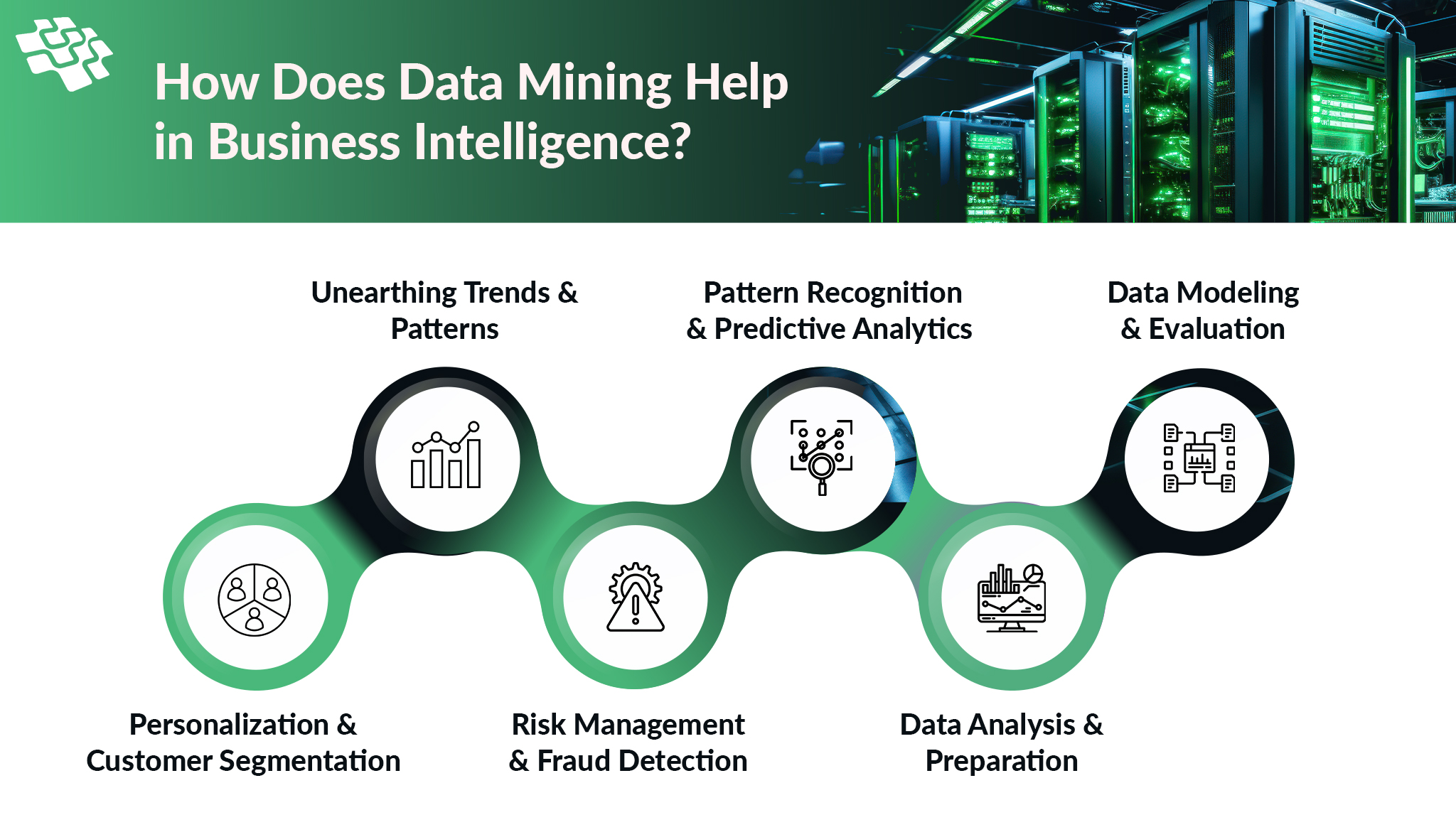

.png)
